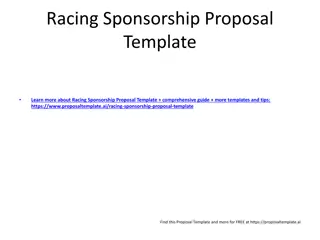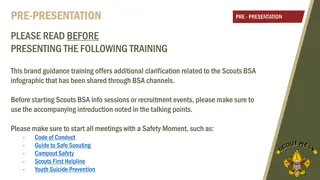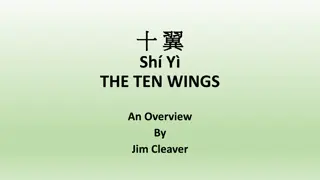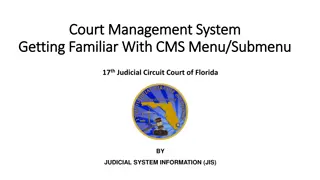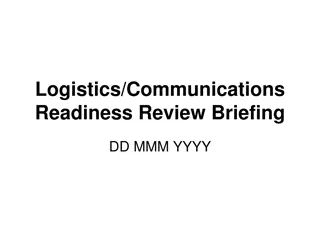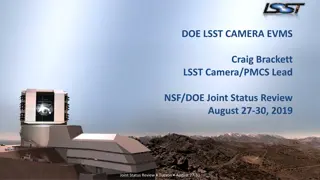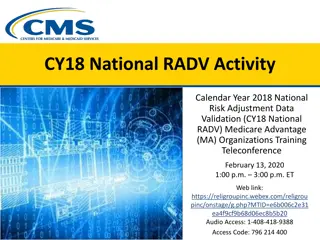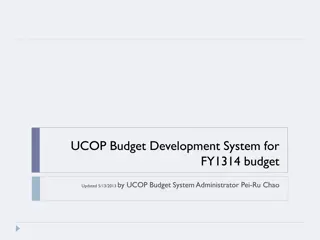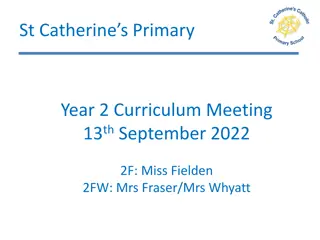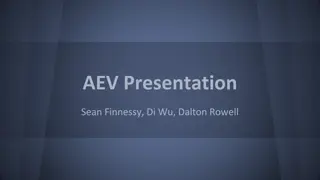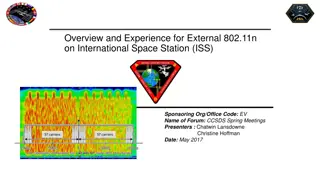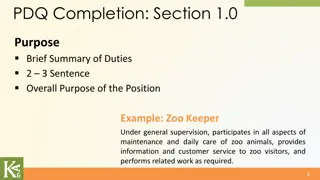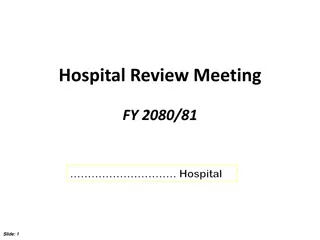LSWG Overview
Land Surface Working Group (LSWG) of passive microwave precipitation retrievals aims to improve estimations by analyzing surface emissivity dynamics. The group discusses ongoing projects, upcoming goals, and collaboration opportunities with other working groups to enhance understanding of over-land precipitation processes and signal content.
Download Presentation

Please find below an Image/Link to download the presentation.
The content on the website is provided AS IS for your information and personal use only. It may not be sold, licensed, or shared on other websites without obtaining consent from the author.If you encounter any issues during the download, it is possible that the publisher has removed the file from their server.
You are allowed to download the files provided on this website for personal or commercial use, subject to the condition that they are used lawfully. All files are the property of their respective owners.
The content on the website is provided AS IS for your information and personal use only. It may not be sold, licensed, or shared on other websites without obtaining consent from the author.
E N D
Presentation Transcript
LSWG Overview http://lswg.umd.edu A working group focusing mostly on improving passive microwave precipitation retrievals over land surface. (J. Turk, S. Ringerud, Co-Chairs) Land Surface WG meeting took place online, on Sept 23, 2020 Better understanding of emissivity dynamics across the microwave spectrum Classify surface types, identify appropriate algorithm constraints Monthly meetings feature research presentations, span wide variety of topics that trace back to surface conditions at the time of the observation LSWG J. Hydrometeorology (2020) manuscript (completed): Adapting Passive Microwave-Based Precipitation Algorithms to Variable Microwave Land Surface Emissivity to Improve Precipitation Estimation from the GPM Constellation, by Turk, Ringerud, You, Peters-Lidard, Panegrossi, Casella, San , Camplani, Ebtehaj, Guilloteau, Prigent.
(From 2019 Meeting) Projects and Goals for Next Year 1) Discussed cold season study proposed in 2018. Finish off and prepare joint manuscript. (paper complete) 2) Move beyond GMI - Identical MRMS dataset for cross/conical sensors (2-min data available at pmm-gv site, ongoing) 3) Exploit OE retrieval in combined (DPRGMI) Version 7 (state vector including full surface emissivity computed for all pixels). (Ringerud/Munchak, ongoing) 4) Extend beyond validating surface products, to vertical validation by surface conditions. How to compare vertical profile quantities? (Utsumi et al study complete) 5) Exploit modern-era classification, supervised learning, etc. to tackle complex problems that are poorly constrained. (ongoing)
Action Items for This Year Keep focus on (current/next version) algorithm needs, assessing new V7 capabilities, and surface-related GV (Sarah, others) Steer towards land surface science that uses GPM and other products; toward understanding over-land precipitation processes and associated passive MW radiometric signal content. (Co-chairs to steer ) CloudSat-GPM coincidence dataset is stalled due at 2016/2017 due to delays in CloudSat L2 products. However, 1B-CPR is fairly up to date and that product may be sufficient for some less quantitative use, e.g. detection. (N. Wood to coordinate). Other surface classification for GPROF, as needed (J. Turk, others) ..
Collaboration Welcomed with Other WGs PSD WG and LSWG have common interests Scattering signal is crucial for passive retrievals over land (obs + modeling) Understanding relationship of multi-spectral scattering signal to surface precipitation + how to understand/parameterize this Validation strategies And for Combined (DPR+GMI) algorithm Combined profile retrieval is used in the prior data for radiometer-only And for IMERG Passive MW characteristics over different surfaces feed into Level-3 creation
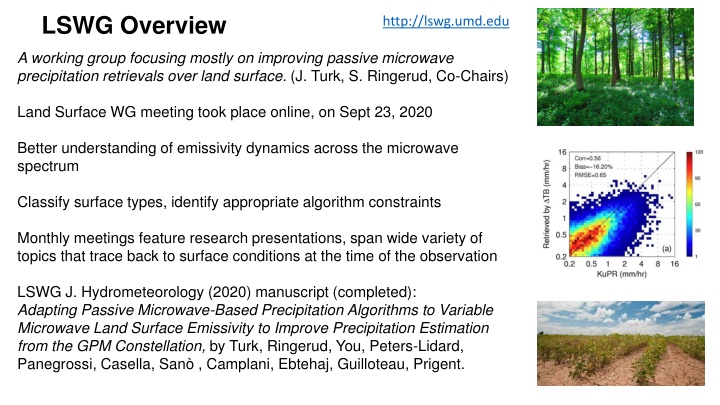

![❤[READ]❤ Deep Space Craft: An Overview of Interplanetary Flight (Springer Praxis](/thumb/21511/read-deep-space-craft-an-overview-of-interplanetary-flight-springer-praxis.jpg)



